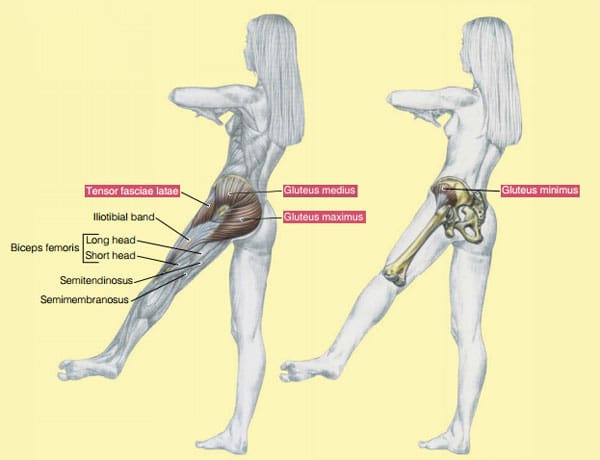Learn more about the Abductor Muscle groups and take your fitness knowledge to the next level.
What is the Abductor Muscle?
Abductors are the muscles that rotate an arm or leg to the side of the body. They are not one singular muscle, rather a combination of muscles that work togeter to perform the specific movement.
The abductor muscle group located on the lateral side of the thigh include the piriformis, superior gemellus, inferior gemellus, tensor fasciae latae, sartorius, gluteus medius, and gluteus minimus muscles.
 Source: 24hr Fitness
Source: 24hr FitnessThe primary muscles involved in the action of arm abduction include the supraspinatus, deltoid, trapezius, and serratus anterior.
What is the Purpose of the Abductor Muscle Groups?
Legs
Abductor muscles help to raise your leg to the side, away from your body. They also help support your pelvis when you’re standing on one leg.
When these muscles are weak, it can affect your balance and mobility. It can also cause low back pain due to instability.
Arms
“The serratus anterior is a saw-shaped muscle originating from the upper eight ribs and inserting upon the inner medial border of the scapula.
Its primary function is to laterally rotate and protract the scapula. The trapezius and serratus anterior muscles work in tandem to coordinate rotation and movement of the scapula to accommodate the full range of motion of the arm.
Specifically, they facilitate abduction of the arm from 90 degrees and further upwards.”
What is the Difference between Adductor and Abductor Muscles?
Your abductor and adductor muscles work in sync to enable you to move your legs sideways.
Your abductor muscles are responsible for moving your leg away from your body’s midline, while the adductors are responsible for moving the leg back towards your body’s midline.
Where is Hip Abductor Pain?
Acute muscle tears or strains occur in the hip abductor muscles most frequently in the gluteus maximus and gluteus medius muscles and occasionally in the tensor fascia lata muscle. This is more likely to occur during rapid sidestepping or change of direction when running.
Why does my Abductor Hurt?
Hip tendonitis, tendinopathy, or abductor tears are often caused by overuse while playing sports that require a lot of jumping.
Hip tendonitis can also be caused if the nearby supporting muscles are too weak or too strong, causing a muscle imbalance. Tendon overuse can also cause tiny micro-tears in the tendon.
What does a Torm Abductor Feel Like?
Pain and tenderness in the groin and the inside of the thigh. Pain when you bring your legs together. Pain when you raise your knee. A popping or snapping feeling during the injury, followed by severe pain.
What Causes Weak Abductor Muscles?
The Trendelenburg Gait is caused by a unilateral weakness of the hip abductors, mostly the gluteal musculature. This weakness could be due to superior gluteal nerve damage or in 5th lumbar spine lesion.
This condition makes it difficult to support the body’s weight on the affected side.
How Long can it take for a Hip Abductor to Heal?
A mild strain can take a few weeks to heal. But a severe strain can take six weeks or more to heal, according to Summit Medical Group.
Failing to rest and recover a hip flexor strain usually only results in a worse injury and greater pain at a later time.
Abductor Muscle Information
Learn more about your body with this article on the Infraspinatus Muscle.
Test your fitness with these Kettlebell Clean and Press Workouts.
Image Sources
- Hip-Abduction: 24hr Fitness
- Lauren_Fisher_Puori-121: Puori
